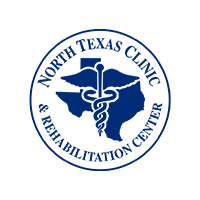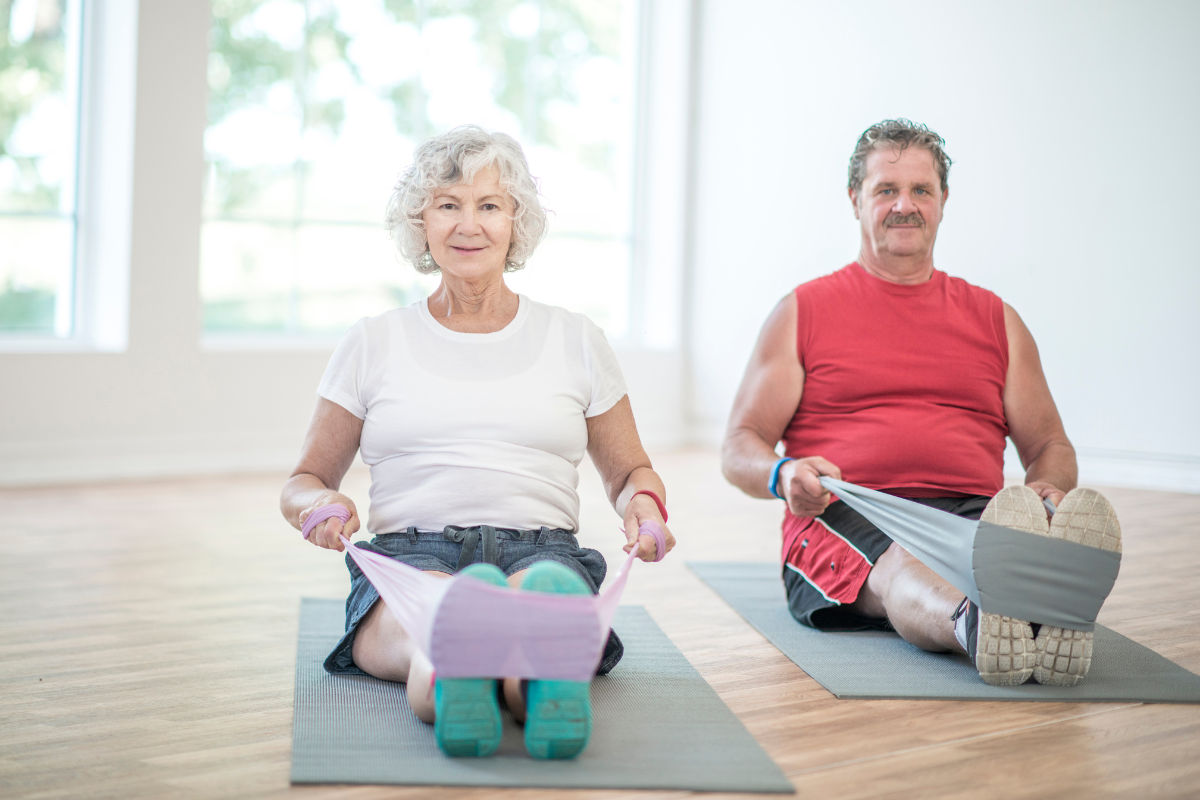Powerful muscles, strong bones, flexible joints — these are essential throughout our lives. These become even more critical because they are more challenging to maintain as we age, especially if you’re not used to working out. Fortunately, low-impact strength training can provide all the benefits of strong bones and muscles with less risk.
Staying active is crucial for maintaining our health and independence as our bodies naturally age. But the high-intensity workouts you see younger or more active people do may not be realistic or even healthy for you.
That’s where low-impact strength training comes in. It is an effective alternative for building muscle, improving bone density, and boosting overall health without putting excess stress on the joints. It’s an ideal form of exercise for anyone, especially those aged 50 and above.
Whether you’re new to exercise or dealing with chronic pain, this guide will help you understand the benefits of low-impact strength training, how often to do it, and the best exercises to get started.
Why Strength Training Is Important for Everyone
- Maintains Muscle Mass — As we age, we naturally lose muscle mass in a process called sarcopenia. This common condition can cause reduced strength, mobility, and overall functionality. Low-impact strength training helps combat muscle loss by stimulating growth and preserving existing muscle.
- Builds Stronger Bones—Another frequent issue with aging and a sedentary lifestyle is osteoporosis, the loss of bone mass and density that can lead to devastating fractures. Strength training, especially weight-bearing exercises, helps maintain and improve bone density, reducing the likelihood of bone-related injuries and deformities, such as kyphosis.
- Improves Balance and Reduces Fall Risk — Falls are a leading cause of injury in older adults. Strengthening key muscle groups can improve balance and coordination, making falls less likely. Low-impact strength training that focuses on stability and the core is particularly beneficial.
- Enhances Joint Health and Reduces Pain — Unlike high-impact exercises that can strain the joints, low-impact strength training strengthens the muscles around the joints, offering better support and reducing pain caused by conditions like arthritis. Stronger core and back muscles also improve posture, which reduces back pain.
- Boosts Mental Health — Physical activity releases endorphins, the body’s natural mood enhancers. Regular strength training can reduce stress, improve mood, and decrease symptoms of anxiety and depression.

How Often Should You Do Low-Impact Strength Training?
Before beginning any new exercise program, it’s best to talk to your healthcare provider or chiropractor first, especially if you have chronic conditions, pain, or previous injuries. They can give you a personalized plan for what types of exercises are best and how often to perform them.
However, these guidelines are a good starting point for most people.
- For Building Stronger Bones — Aim to perform weight-bearing exercises targeting different muscle groups 2-3 per week.
- For Injury Rehabilitation — Follow your provider’s advice and start slowly. Depending on the nature and severity of the injury, they may recommend working up to light resistance exercises 2-3 times per week to rebuild strength.
- For General Health and Longevity — 2-4 sessions per week of low-impact strength training combined with cardio and mobility exercises are best for overall health. The goal is to remain consistent while gradually increasing intensity as your strength improves.
- Importance of Rest and Recovery — Rest days are crucial for your muscles to recover and grow. Ensure you give yourself at least 48 hours between strength training sessions targeting the same muscle group.
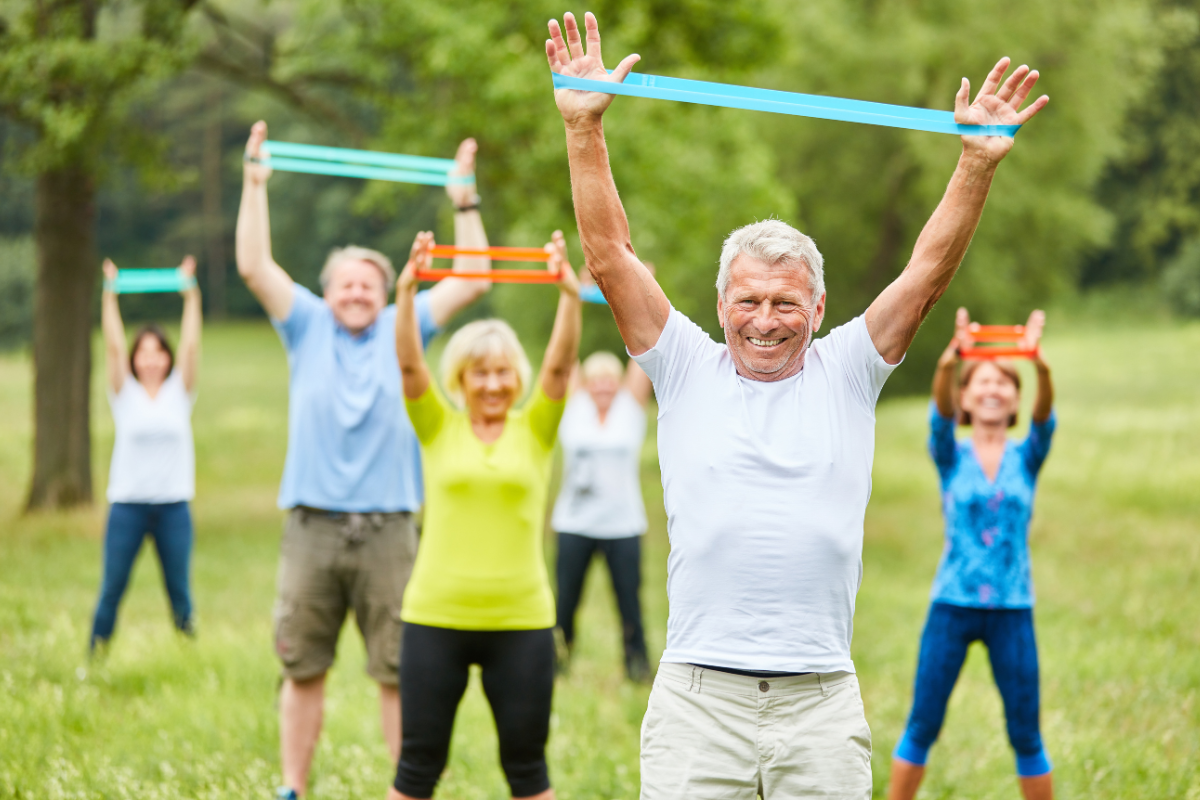
Examples of Low-Impact Strength Training Exercises
There are many practical exercises that almost anybody can do, even those who are older or dealing with chronic pain.
The following low-impact strength training exercises are a fantastic starting point if you’d like to start building moves into your daily routine. Other resources include local and online gyms, like the YMCA, SilverSneakers, and Turtle Gym. You can also find excellent workouts on YouTube.
Above all else, if you’re concerned about pain or causing injuries, talk to your healthcare provider first. They can point you in the best direction for your health and strength-building needs.
Bodyweight Exercises
- Chair Squats — Stand in front of a chair, lower yourself down as if sitting, and then rise back up. This exercise strengthens your legs, glutes, and core while providing stability.
- Lunges — Kneel on one knee with one leg bent in front, raise your arms overhead (if possible), and stand, keeping the feet where they started. Then lower, repeat, and switch sides. Lunges, both forward and backward, build glute, hip, and upper leg strength.
- Leg Raises — If sitting, raise one leg straight in front keeping the knee straight. Or, if standing while supporting yourself with a wall or chair, practice raising your leg up in front, to the side, and behind. These exercises are excellent for targeting several muscles in your legs and hips while increasing stability and balance.
- Wall Push-Ups — Stand an arm’s length away from a wall, place your hands on the wall, and perform push-ups to help build upper body strength.
- Glute Bridges — Lay on the floor, legs bent, and feet hip-width apart and close to your buttocks. With your hands to at your sides for support, slowly squeeze your glutes and raise your hips. Hold for a few seconds, then lower with control. This amazing full-body move strengthens your legs, glutes, abdominals, lower back, and even arms.
- Plank — Get into a push-up position (on your feet or modified on your knees) with straight arms. Hold for 30+ seconds, and slowly lower. Planks are another full-body exercise that is hugely beneficial for your core and arms.
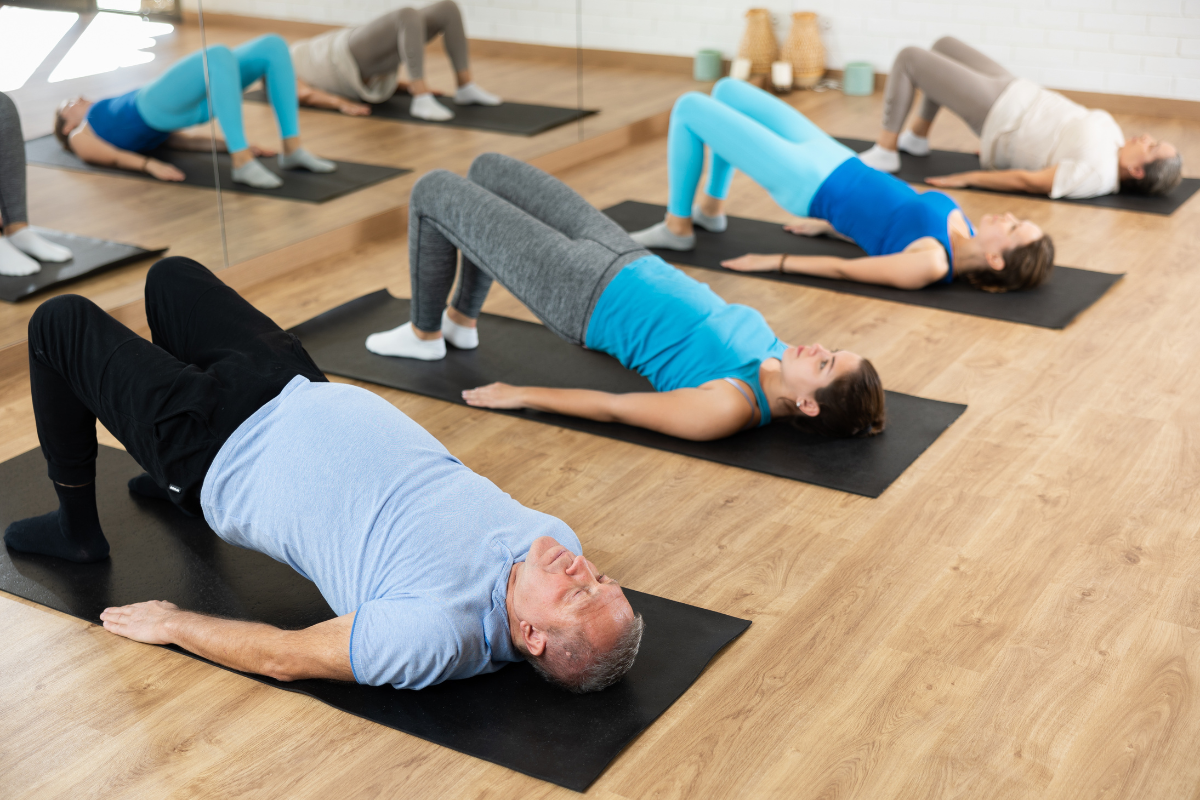
Resistance Band Exercises
- Bicep Curls — Stand with a resistance band under your feet and hold the ends. Curl your arms up slowly to work your biceps.
- Lateral Arm Raises — Stand with the band under your feet and hands holding each end at your side. Slowly raise your arms until they are even with your shoulders, lower, and repeat to build stronger upper arms, shoulders, and back.
- Chest Press — Sitting in a chair, put the resistance band behind your back and hold both ends with each hand. (You may need to gather the ends if it’s a long band.) Push both arms out in front of you and return to starting position with control. This move increases strength in your arms and chest.
- Seated Row — Sit on the floor with your legs straight, loop a resistance band around your feet, and pull the ends towards your chest to work your back muscles.
- Leg Press — From a sitting position, loop the band around one foot and hold the ends with both hands. Lift your leg and slowly push out until it’s straight. After several repetitions, switch sides.
Dumbbell Exercises
- Alternating Bicep Curl and Overhead Press — Hold a light dumbbell in each hand at your sides, raise one dumbbell by bending at the elbow, then press it overhead while keeping the other hand at your side. Switch and repeat.
- Side Arm Raises — Hold dumbbells at your sides and lift them outward to shoulder height. This works the shoulders and improves stability.
- Bent-Over Rows — With a dumbbell in each hand, bend slightly forward and pull the weights towards your torso while keeping your elbows bent. Row moves target the back and triceps.
- Weighted Squats — Holding one dumbbell with both hands at your chest or two in each at your shoulders, perform squats by lowering your hips and keeping your knees over your big toes and shins perpendicular to the floor.
- Weighted Stair Steps — Holding two dumbbells at your side, step up onto a platform or stair step, alternating legs each time.
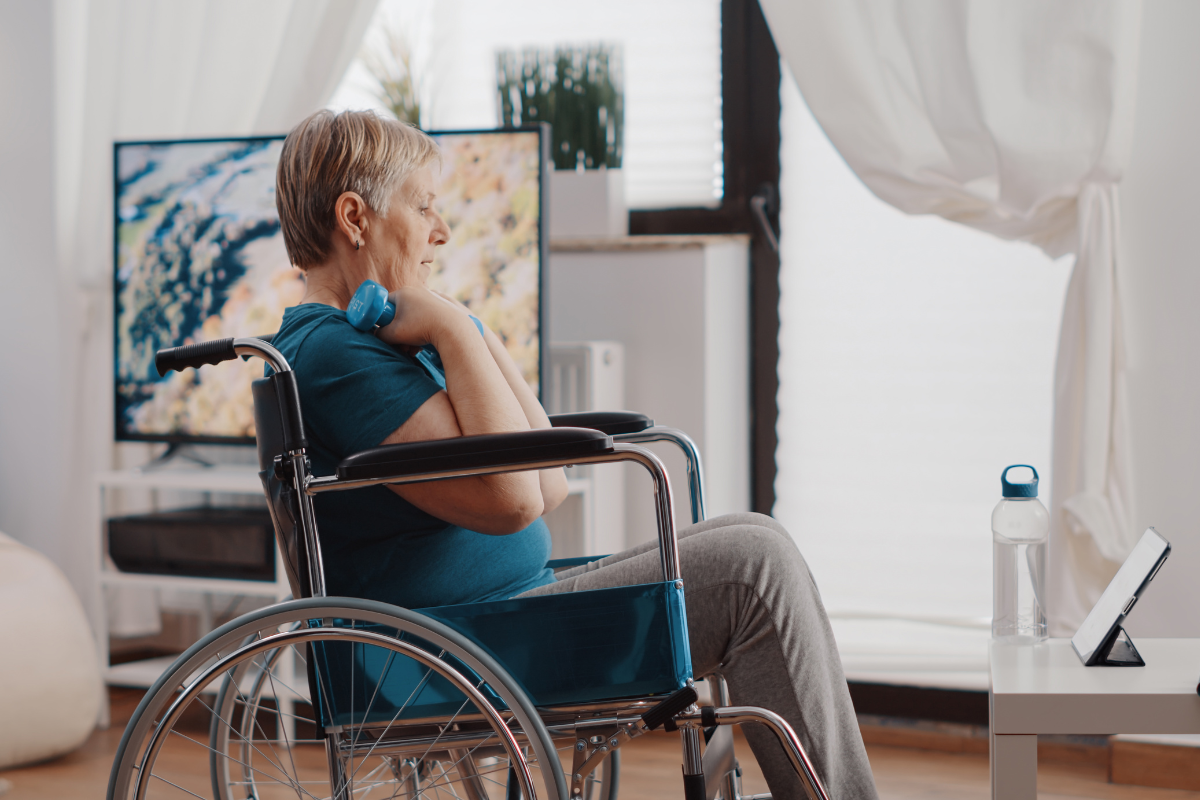
Water-Based Strength Training
- Aqua Aerobics — Exercising in water reduces joint stress while providing resistance for muscle building.
- Pool Resistance Exercises — Using water dumbbells or resistance gloves in the pool can offer a gentle yet effective workout for the entire body.
Modifying Low-Impact Strength Training Exercises
While most of these exercises are a wonderful place to start for most people, they may not all be appropriate for everybody. Those who are recovering from significant injuries, live with disabilities, or are of advanced age may not have the strength or capability to perform these moves.
Fortunately, almost any exercise can be modified to fit your needs. For example, dumbbell exercises can be done without the weights by simply doing the moves with body weight only. This is great for people who need to build strength slowly.
These other tips will help make sure you get the benefits of low-impact strength training without overdoing it.
- Use of Supportive Equipment — Chairs, walls, and resistance bands provide extra support, making exercises safer and more manageable for beginners or those with limited mobility.
- Start Small — Whether using dumbbells or resistance bands, start with light resistance and gradually increase as you become stronger. For big, full-body movements, try cutting it in half. For example, do a plank on your knees instead of your feet. Or, for overhead presses, only press to your head until you gain more strength and mobility.
- Avoiding Pain and Discomfort — Pay attention to your body’s signals. Mild discomfort is normal, but sharp pain is a sign to stop. Or if you can’t move the next day, you overdid it and need to start smaller next time. Modify exercises as needed to avoid strain.
- Consult a Professional — If you’re unsure where to start or have specific health concerns, consult a physical therapist, certified trainer, healthcare provider, or chiropractor who can create a personalized program for you.
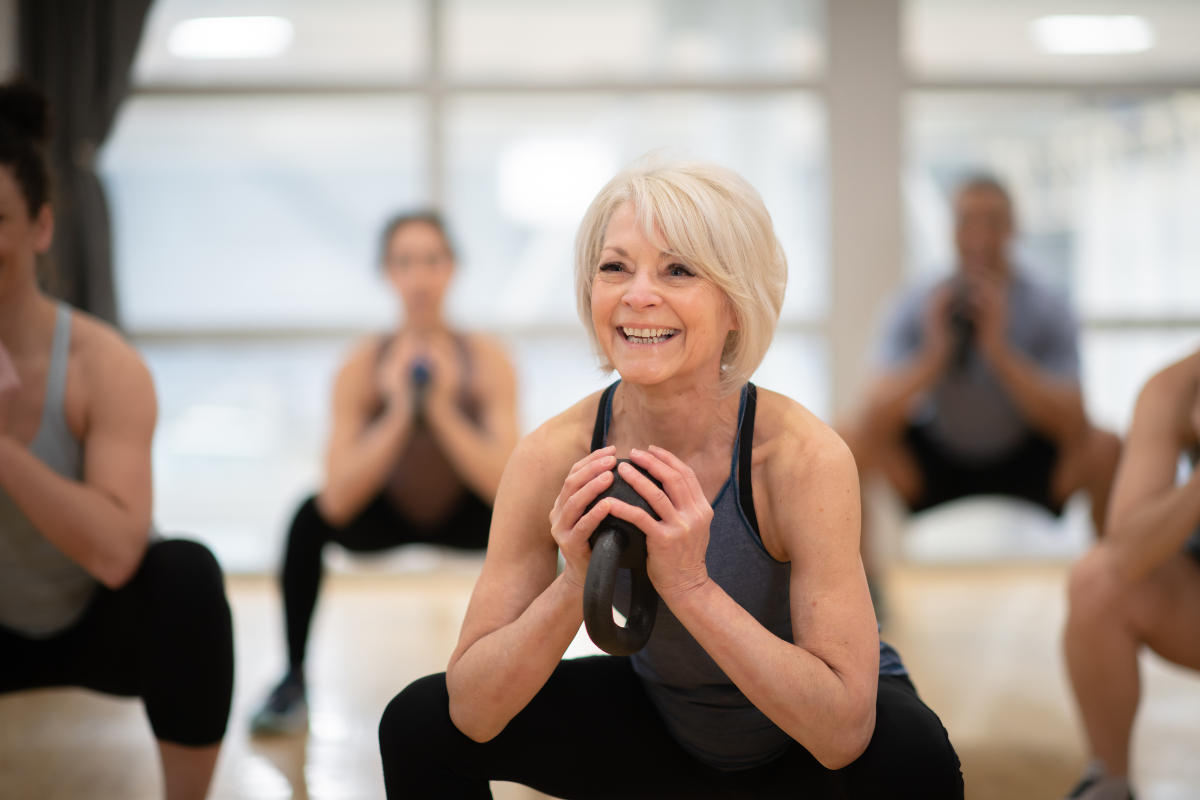
Tips for Staying Consistent with Low-Impact Strength Training
Starting new habits and changing your lifestyle can be challenging for anybody at any age. But when you’re older or live with chronic conditions, it may seem insurmountable. However, there are things you can do to help you achieve your fitness goals and live a healthier, longer life.
First, begin with small, achievable goals, such as completing two weekly sessions. Slowly increase your targets as you build strength and confidence.
To make sure you stay on track, keep a simple log of your workouts, including the exercises you did, the number of reps of each, the weights or resistance you used, and how you felt afterward. There are many convenient apps you can use, or just have a notepad or journal handy after you work out. Seeing your progress over time can be very motivating.
Exercising with a friend or family member can make the experience more enjoyable and help keep you accountable. If you don’t have anybody to join you, join a local class or group for consistency and support.
Finally, celebrate every win, even small ones. Recognize and celebrate milestones, such as lifting heavier weights or completing more reps. Positive reinforcement helps maintain long-term motivation.
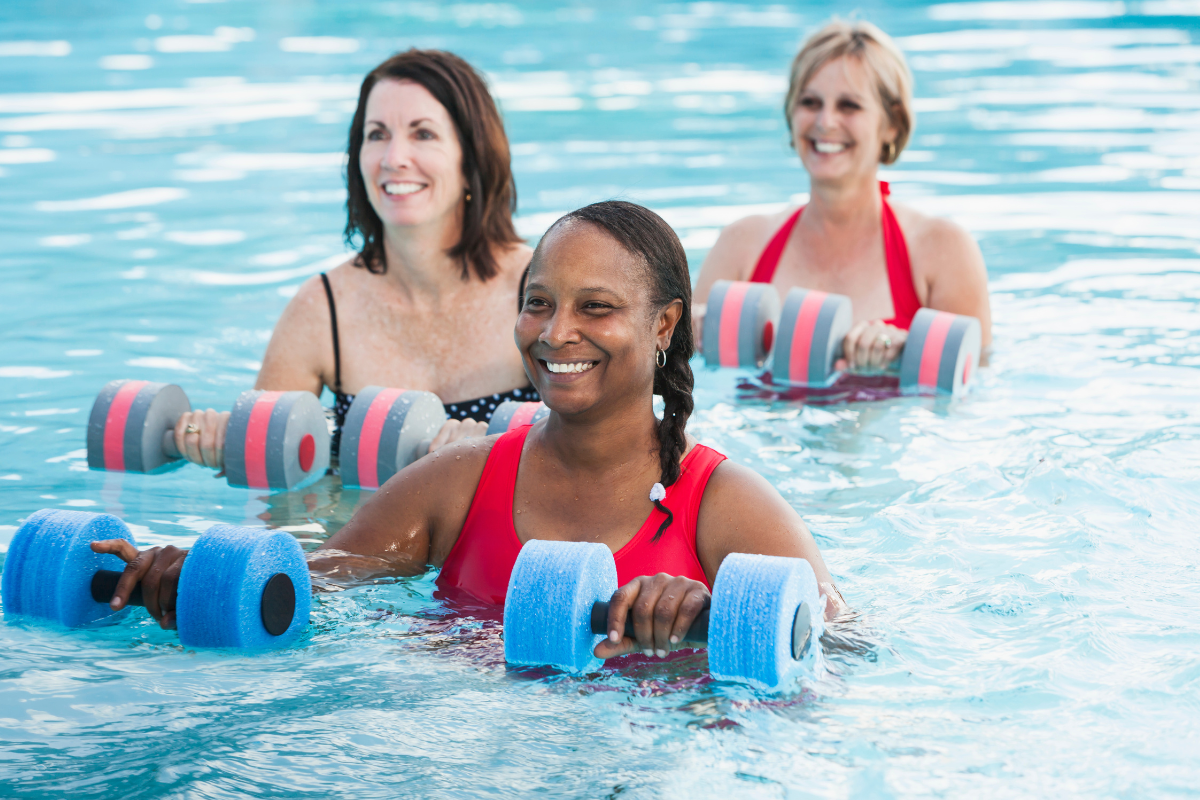
It’s Never Too Late to Start Strength Training
Low-impact strength training is an accessible, effective way to build and maintain strength, improve bone density, and support overall health at any age. By starting slow, staying consistent, and modifying exercises as needed, you can enjoy the many physical and mental benefits of strength training without putting unnecessary strain on your body.
And if you don’t feel comfortable starting on your own, talk to one of our chiropractors! We are passionate about movement and exercise as part of a healthy, pain-free lifestyle.
Why wait? Start today with one simple low-impact exercise and take the first step toward a healthier, stronger you!
